First US Review: The Rega RP3 A New Legend is Born
By Jeff Dorgay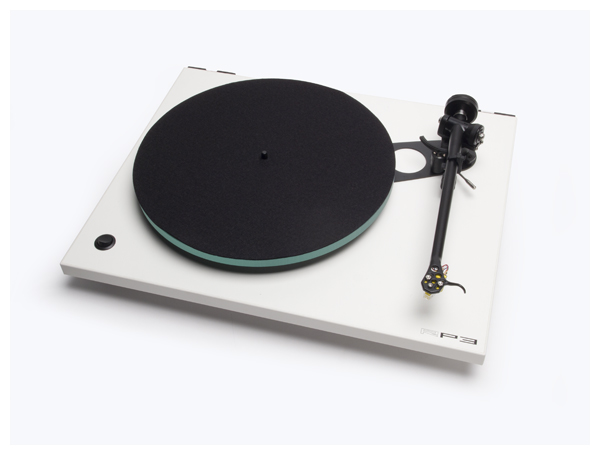 Roy Gandy, the founder of Rega Research, proceeds with new ideas and new products at his own pace. Two years ago, Gandy had a prototype table in his listening room that looked as if it could have been a replacement for the P9 turntable, the top end of Rega’s range. But with an impish grin, Gandy quickly pointed out that it was only an “engineering exercise” and that the concept could either make it into production in months, not at all, or “be incorporated somewhere else in the range.”
Roy Gandy, the founder of Rega Research, proceeds with new ideas and new products at his own pace. Two years ago, Gandy had a prototype table in his listening room that looked as if it could have been a replacement for the P9 turntable, the top end of Rega’s range. But with an impish grin, Gandy quickly pointed out that it was only an “engineering exercise” and that the concept could either make it into production in months, not at all, or “be incorporated somewhere else in the range.”
And now, we have the RP3. While the RP1 came to market as a replacement for the relatively recent P1, the P3 model that the RP3 replaces has been evolving for more than 30 years. Beginning its product life as the Planar 3 back in 1978, the P3 is not only the ‘table that put Rega on the map in the US but the one that gave the company the widest brand identity. It’s tough to find a veteran vinyl enthusiast that isn’t familiar with the P3.
So it isn’t at all surprising to see that, just weeks after its release, the $895 RP3 creating its fair share of buzz. From a technical standpoint, Rega upgraded a number of areas: The main bearing, tonearm, and plinth. (The 24-volt motor has not changed; it is the same motor found in the current P3-24 model.) What’s more, the company enacted the improvements while holding the line on the price. Fence sitters should grab an RP3 sooner than later. Its price already increased in the UK, and given the unpredictability of currency variations, there’s no telling how long the “introductory pricing” will last. Rega’s US importer, Steve Daniels mentioned that this is only for the US market and that it was his choice to keep the price down in order to build excitement for the new model.
Expecting a major overhaul? Move on. At Rega, it’s evolution not revolution, so current P3 owners need not worry that their current investment is worthless. Those that have an older ‘table lacking the 24-volt motor (P3, P3-2000, Planar 3, P2, and P25) can purchase an upgrade kit for $225. The new motor is better in every way—quieter and more balanced, translating into less rumble and a lower noise floor. The best reason for upgrading? The new motor allows you to add the TT-PSU power supply to the ‘table, and boasts the ability to change platter speed at the touch of a button (instead of removing the platter and moving the belt on the pulley) and further refinement of speed accuracy.
While Rega claims that the RP3 uses “virtually the same motor” as the P7 and P9, there is some variation on the theme. Higher-range models utilize more sophisticated power supplies, and the P9 uses a dual-drive belt system. This method follows Rega’s approach to tonearm design, where top-line RB 700 and RB 1000 arms start as the same casting but get machined, balanced, and assembled to increasingly higher standards. It’s one reason why Rega products offer such consistently high value; the firm doesn’t reinvent the wheel with every model.
On the new design, Gandy’s automotive engineering background instantly becomes apparent. He believes excess mass is detrimental to performance, and his ‘tables always champion low mass rather than a high mass approach that tends to go in and out of fashion. The RP3 advances this strategy, with a lighter-mass plinth than the P3-24. A careful look at the tonearm mounting reveals the new “double brace” that Rega incorporated. The machined part allows for increased stiffness between the tonearm and turntable bearing—perhaps the most critical area for structural rigidity. This is the key component in the RP3, and contributes to both the lack of midrange smear and generous soundstage width.
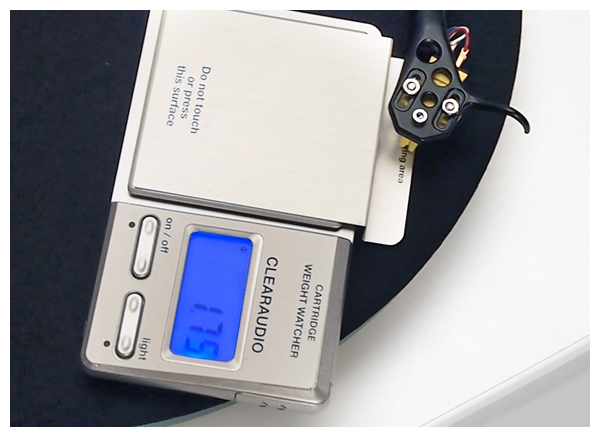 Apples to Apples
Apples to Apples
With a P3-24/TT-PSU already on hand as a reference ‘table, a direct comparison between it and the RP3 became painless courtesy of the two-input Audio Research REF Phono 2 preamplifier. Both ‘tables had a brand-new Rega Exact MM cartridge ($595) and were precisely set to 1.75g via the Clearaudio Weight Watcher digital scale. A quick check of turntable speed via test record and multimeter confirmed that both ‘tables were spot on at 33.3RPM. The REF Phono 2’s dual inputs were both identically configured for gain and loading, and thanks to a few sequential records from Mobile Fidelity, a direct comparison was only seconds away.
When using the Exact with the new RB303 tonearm, the plastic washer required for the third mounting screw is no longer necessary, a luxury that provides an even more secure mechanical connection between cartridge and tonearm. The three-screw mounting arrangement makes it much easier to get cartridge alignment right. It’s a shame more manufacturers don’t take advantage of this configuration. For those wanting the ultimate convenience the RP3 can be ordered with the Elys 2 cartridge pre-installed for $1,095 or the Exact for $1,390.
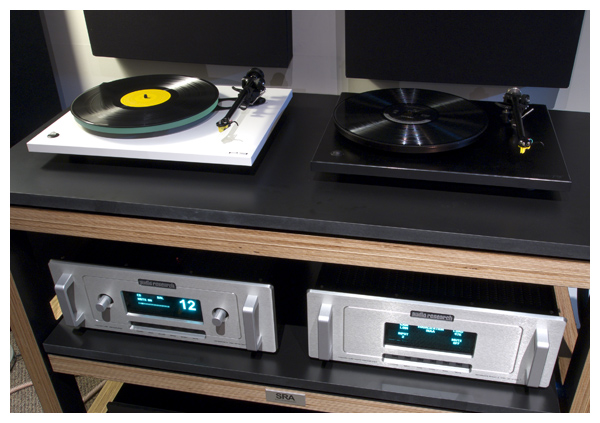 The Comparo
The Comparo
Staff member Jerold O’Brien was enlisted to preside over the turntable connections and provide comic relief. To avoid any pre-conceived bias, he did not tell me what turntable was playing at any given time. He merely started both records, letting me switch between the two via the REF Phono 2 remote and take notes. It only took a few choice cuts to decide on “Input 2,” which ended up being the RP3. O’Brien arrived at the same conclusion a day later when he returned to check my progress.
Rega turntables have always had a fast, lively sound that some have found slightly thin. The RP3 offers a robust improvement in bass weight over the prior P3-24. While listening to favorites from Genesis, Pink Floyd, and Deadmau5, I noticed a firmer low end and additional texture. The new ‘table offered superior pace and bolder bass lines.
The RP3 also claims the edge in HF detail and freedom from grain. The P3-24 never sounded grainy before, but when listening alongside the RP3, the difference was clear. The gap widened when I added the TT-PSU external power supply to the equation. The decrease in noise floor and increase in low-level detail allowed the RP3 to take advantage of the Exact cartridge to a degree that the P3-24 could not. Listening to Godley & Creme’s L revealed a density that’s always eluded me on ‘tables in the RP3’s price range. Much like a Frank Zappa composition, various layers of overdubbed information are present on the record, and while this characteristic won’t reveal tonality, it does reveal resolution. The RP3 kept the pace intact on “Sandwiches of You,” a particularly tough track that features spastic vibes, numerous vocal layers, and fitful drumming. Where the P3-24 becomes somewhat vague at the peak of such activity, the RP3 presents the layers sorted. Again, adding the TT-PSU paid considerable dividends.
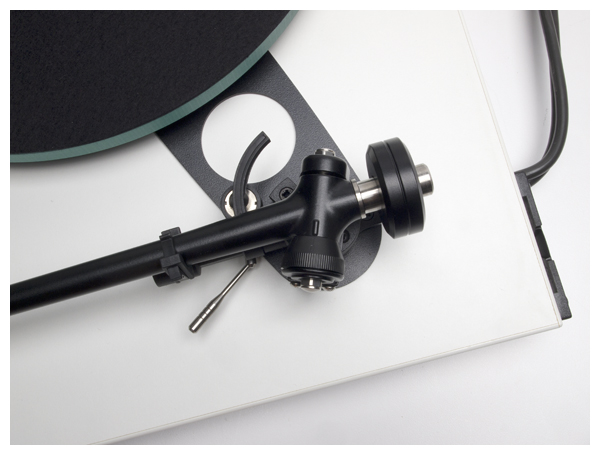 The new RB303 tonearm is another major factor in the new ‘table’s increased clarity and resolution. While the two arms look similar, a rigorous examination of the pivot area reveals the new arm to be beefier than its predecessor. Combining the latter aspect with careful attention to mass distribution and improved bearings further explains the additional detail I experienced—particularly with acoustic music. When comparing nearly identical pressings of Traffic’s John Barleycorn Must Die, sax and flute solos possessed more body with the new ‘table, regardless of what pressing I spun.
The new RB303 tonearm is another major factor in the new ‘table’s increased clarity and resolution. While the two arms look similar, a rigorous examination of the pivot area reveals the new arm to be beefier than its predecessor. Combining the latter aspect with careful attention to mass distribution and improved bearings further explains the additional detail I experienced—particularly with acoustic music. When comparing nearly identical pressings of Traffic’s John Barleycorn Must Die, sax and flute solos possessed more body with the new ‘table, regardless of what pressing I spun.
Almost as telling as its performance with music, the RP3 handled the occasional pop and tick much more efficiently. Whereas such sporadic bits of noise had a certain amount of duration and overhang on the P3-24, the new ‘table quickly disposed of the annoying components. The resultantly improved transient attack gave drums a refreshing vitality, whether it was the processed Roland Space Echo solo during Peter Criss’ “100 Thousand Years” from Kiss’ Alive! or the pristine rhythms of Art Blakey’s “Elephant Walk” from Orgy in Rhythm.
For those fearing the REF Phono 2 too upscale for a pair of $900 turntables, the difference between the RP3 and P3-24 is still easily discernable when listening through the Croft Micro 25/Series 7 combination we reviewed earlier this year, via a pair of recently restored JBL L-100s. To make the test even tougher, the highly un-audiophile speakers were connected to the Croft combo via 16-gauge Radio Shack lamp cord.
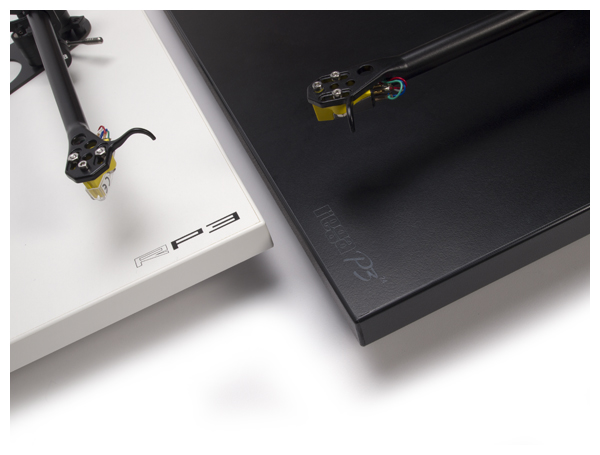 A New Benchmark
A New Benchmark
With so much chatter about high-resolution digital files and new $1,000-and-under DACs introduced on what feels like a monthly basis, it’s refreshing to see this much dedication spent on an equally priced turntable. The RP3 stands as one of the best price/performance ‘tables on the market today. If you can add the Exact and TT-PSU to your budget, all the better. But if not now, they certainly make for a great upgrade path as you go further down the road. Enthusiastically recommended.
Rega RP3
MSRP: $895, TT-PSU $375, Exact Cartridge $595
Manufacturer Information
www.soundorg.com (US)
www.rega.co.uk (UK)


